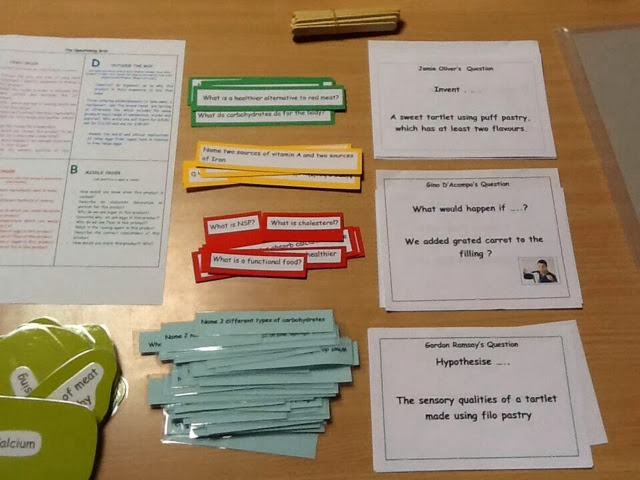This was no the third and final opportunity for the this group of staff to collaborate and share their experiences of questioning. An opportunity to discuss what they have experimented with and the impact that this has had on both their teaching and learning within the classroom.
PAIR REHEARSAL
This method allows students to work with their table or shoulder partner to discuss and agree a response before answering. As a result of allowing this additional time for students to collaborate their answers students feel more confident in their responses as well as offering a more detailed responses with higher order thinking. It is also clear that it increases student engagement and interaction.
ENGAGEMENT CARDS
This method puts the emphasis back on the student to either pose a question or offer and answer, of merit, within the lesson. This 'challenge' creates and environment where students think carefully about the quality of any questions that they may ask as well as the quality of their responses. The cards create a focus for the students, creating an emphasis on quality rather than quantity.
POSE-PAUSE-POUNCE-BOUNCE
This method places emphasis on the teacher to allow enough thinking time for students to generate an answer before pouncing on a student for a response. The impact this has on learning is an increase in student engagement as well as improved student response. After pouncing on a student for a response, the model requires a bounce to another student to improve and develop the answer previously offered.
Onwards to the next meeting on the 7th January 2014, where staff will be able to share this practice with members of their own faculty.








